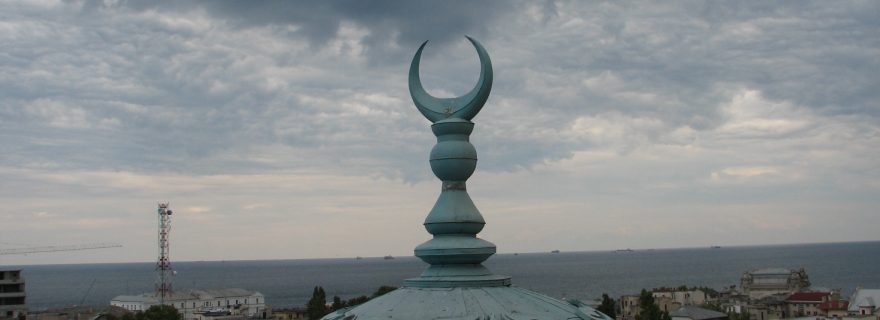Salafism: From Social Phenomenon to Security Risk Factor – And Back Again?
The Cornelius Haga Lyceum has been under investigation for promoting Salafist ideas – but how did ‘Salafism’ become a security issue in the first place?
In the past couple of months, the Cornelius Haga Lyceum in The Hague made frequent headlines in Dutch newspapers. One of the main causes of its scrutinization is the suspicion that the school would proclaim a so-called ‘Salafist’ ideology. Salafism is generally understood as a form of orthodox Islam, related to the Saudi-Arabian Wahhabist doctrine. In recent years, Salafism in the Netherlands has increasingly been perceived as a threat against national security – a trend of which the investigations into the Cornelius Haga Lyceum are illustrative. However, this security-risk approach to Salafism has not always been as dominant in Dutch policy discourse. This becomes apparent when examining the way in which Dutch security actors – specifically the Ministry of Justice and Security, the General Intelligence and Security Service (AIVD) and the National Coordinator for Security and Counterterrorism (NCTV) – have used the term ‘Salafism’ throughout the years.
Overall, the way in which Dutch security actors have perceived Salafism, has fluctuated profoundly. This can partly be attributed to a general lack of consensus on the extent to which orthodox Islam poses an actual security risk. Some argue that Salafism jeopardizes our democratic values, thriving on social polarization and possibly stimulating radicalization towards violent extremism. To others, however, Salafism is a ‘normal’ social phenomenon and a righteous claim to the freedom of religion and expression. The Dutch government, too, has struggled with balancing these two conflicting perspectives – shifting between a ‘social’ and a ‘security’ approach to Salafism, in accordance to certain changes in the socio-political sphere.
In the early 2000’s, Salafism made its first introduction to the Dutch security policy agenda. This was a result of general political unrest following the emergence of the Hofstadgroep– the first homegrown jihadist network in the Netherlands – and the subsequent murder of opinionist Theo van Gogh. Overall, security actors believed that Salafism would inhibit Muslims’ integration processes, discourage their political participation, isolate them from society, limit gender equality and the freedoms of other minority groups – and ultimately, constitute a potential cause of radicalization. In its publications, the AIVD warned for Salafists’ engagement in parallelism(the full or partial rejection of non-Islamic governments) and exclusivism(the preaching of religious and cultural intolerance). Later on, the security actors added to this the risk of so-called façade politics– where Salafists would operate under a veil of moderatism, while proclaiming controversial beliefs of intolerance during private gatherings.
Yet, as firm as these assertions appeared to be, the actors’ preoccupation with Salafism as a security risk ceased just as swiftly in the years that followed. In 2008, counterterrorism and -radicalization lost their priority status as policy topics, due to a declinein the jihadist threat posed by the Hofstadgroep and the emergence of new phenomena which required the government’s attention, such as the financial crisis and Dutch military involvement in Iraq. This shift in focus was reflected in the Dutch security approach to orthodox Islam. Security actors started to emphasize the differences – instead of the similarities – between Salafism and jihadist or extremist ideologies. The AIVD would even go as far as suggesting that Salafists might be able to provide an ‘alternative, non-violent discourse’ to jihadism. As such, the actors increasingly considered the Salafist movement to constitute a ‘buffer’ – or a protective factor – against radicalization, thus abandoning the security-risk perspective that it had adopted in previous years.
This newfound approach did not last long, however. In the early to mid-2010’s – in the wake of the Arabic Spring revolutions and a series of large-scale attacks in European countries such as Belgium, Germany and France – counterterrorism became a high-priority security topic once again. And with it, so did Salafism. The sudden rise of ISIS and a simultaneous flow of hundreds of young Dutch citizens to the war zone stimulated the comeback of the security-based Salafism discourse even further. Dutch Salafists were considered to be at risk of recruitment and radicalization towards jihadism, due to the assumed ideological similarities between both groups. Moreover, Salafism was thought to contribute to social polarization and provide an indirect legitimization for joining the violent jihad. Therefore, the ‘buffer’-status that security actors had previously attributed to the Salafist movement, was replaced with one of a radicalization ‘breeding ground’.
In conclusion, there has generally been very little consistency in the security actors’ perspective on Salafism. It could be argued that the actors’ ambivalence is to some degree a natural side-effect of policy making. Socio- and geopolitical factors will always cause certain policy topics to take priority over others. Moreover, as (inter)national contexts shift, so do definitions and understandings of certain phenomena. The lack of coherence observed in the actors’ Salafism discourse therefore suggests that there are no ‘fixed’ characteristics to the Salafist movement – and that its definition is primarily dictated by external factors. This could, however, eventually prove to be an issue in cases such as the investigation into the Cornelius Haga Lyceum. Because in the end, the accusations of ‘Salafism’ that the Lyceum is facing today, are more likely a reflection of the current socio-political climate, rather than indicating an ‘objective’ security threat.
This blog is based on the master’s thesis ‘Salafism: Between Buffer and Breeding Ground’ (2019) by Layla van Wieringen.


